Becky Robinson's Blog, page 50
December 13, 2016
Three Right Ways to Think About Your Website Content
Creating winning website content is a lot of work, and requires a tremendous amount of thought and planning.
These three tips are designed to help you start off and stay on the right track as you move through the content creation process.
1. Focus on Your Visitors
Your website content should be immediately engaging — from the first words read or images seen on your home page, to the call-to-action on your contact page. Think about what visitors will gain from your site, and make it easy for them to understand this gain.
Remember, nothing is more relatable than a story — what’s yours? By sharing your genuine self and journey with others, you are helping them relate to you as an individual, rather than just another face on a webpage. Your website content should be about presenting yourself as a real person (company, organization, etc.) whose aim is to engage with real people (visitors to your site).
Focus your website content on who you are, who your audiences are, and what those audiences would find relevant and intriguing.
2. Encourage a Smooth Flow
There are two main questions you should ask when designing a user experience for your website:
What action(s) do you want visitors to take on your site?
What do visitors do your site wish to gain from engaging with you?
When planning the flow of your site, keep in mind that all content should be related to one or both of these questions. Extraneous information can often deter people from the desired path/outcome.
Your site map/navigation, design, and content should be created to lead visitors to your site through a series of points, and should inspire them to easily take some kind of action to engage with you.
3. Ask for Action
Oftentimes, we’re afraid to ask directly for what we want. No one wants to come across as pushy. But when it comes to websites, we need to be direct — or we risk losing potential customers / partners / readers (etc.) who can so easily be distracted or lose interest.
Don’t be afraid to ask. Do you want someone to sign up for your newsletter? Schedule a consultation with you? Buy your book? Make your calls to action clear—using direct language will encourage decisiveness and follow-through.
Tell people what they are getting. Visitors to your site should quickly be able to understand the value that engaging with you will bring. Example: “Sign up for my newsletter and receive a weekly tip on time management” or “Sign up to receive your free guide to getting along with your co-workers.”
Are you interested in working with Weaving Influence on your next website or website content project? Contact us to learn more!
Image credit: everythingpossible / 123RF Stock Photo
December 9, 2016
Featured On Friday: Our @teambuzzbuilder Authors

We’re so appreciative of the amazing bloggers that make up Team Buzz Builder, our network of online influencers working together to make a difference by sharing buzz about messages that matter. We are thrilled for this Featured on Friday to feature some of the books our buzz builders have launched in the past year.
Let’s meet our 2016 TBB authors and their books!
Mark Deterding, Leading Jesus’ Way – Leading Jesus’ Way is how you become the leader God created you to be. Read this book to learn an actionable model of servant leadership that will positively impact both your personal and professional life. Leading Jesus’ Way will help you step into faith-based servant leadership, too. You can take your faith to work, get great results, and build up the people you work with using the lessons in this powerful book. Tweet for Mark: Check out a fantastic new book about #servant #leadership by @mwdeterding called #LeadingJesusWay http://amzn.to/2f7XNmI
Byron Ernest, The Hand in the Back of the Room: Connecting School Work to Real Life – The challenge to all of us in education is to find ways to make learning visible by connecting school work and real life for the students we serve. One of the ways to do that is to call on “the hand in the back of the room” and answer “why” with real world relevancy. Teachers many times fail to provide a context through observations, inferences, and actions appropriate for students to make the connection to the real world. These connections help the students to understand higher-level science concepts. The ultimate goal of education is to improve student achievement and performance, and the contents of this book reveal that teaching science in a relevant context could positively impact this achievement and performance. Tweet for Byron: Teachers, need help #connecting school work and life? Check out The Hand in the Back of the Room by @ByronErnest ! http://amzn.to/2f89s4F
Sean Glaze, The Ten Commandments of Winning Teammates – Winning Teammates are the people that make it possible for any group to succeed… the people who others depend on. In the book, you meet Nick Turner, a talented worker who finds himself changing jobs – again. While packing to move, he finds an old piece of paper tucked away in a shoe box… a forgotten gift from his high school coach with a list of ways to be a winning teammate. As he travels to his new job, he has a series of interesting interactions that illustrate the importance of the 10 Commandments his coach had emphasized years earlier. The ten lessons he benefits from during his journey will inspire you to be a winning teammate – regardless of the industry you work in. Tweet for Sean: Author Sean Glaze @leadyourteam shares his 10 commandments for #winning #teammates http://amzn.to/2giq9dP
Rebecca Henderson, Serving with Significance – Many books on volunteerism and leadership are more theory than practice. Serving with Significance is full of easy-to-follow tips that can be implemented immediately by its readers. Although some people are lucky enough to be born leaders, leadership is a skill that can be learned. Like most skills, the more it is practiced, the better one gets. The concept of volunteerism at its very roots is changing the community and the world in which we live. Leading the charge toward making a positive difference in the world is one of the few opportunities that every person can take advantage of at any point in his or her life. Tweet for Rebecca: Meet @rebeccainjc and her first book about #leading through #service http://amzn.to/2fGMtds
Congrats to Mark, Byron, Sean, and Rebecca! We’re thrilled to support you!
December 6, 2016
Looking Back at the You Matter Marathon
Back in October, Weaving Influence signed on to be an Ambassador for the You Matter Marathon, a worldwide project in which participants each distributed a “You Matter” card every day in November with the goal of creating and enriching positive connections between people and within communities. Cheryl Rice of Your Voice Your Vision conceived and implemented this project.
In case you did not see the video created to promote the You Matter Marathon, watch it here.
The Excitement of Beginning
Just like a traditional marathon, each of us who were participating lined up at the start line, full of optimism and enthusiasm. Equipped with 30 “You Matter” cards, one for each day, we had our eyes on the goal of reminding individuals how much they mattered as the month unfolded.
We had 14,473 participants (nicknamed YuMMies) representing 105 Ambassador organizations, hailing from all 50 United States and 59 countries.
The Exhilaration of Giving
As the month progressed, each of us created a strategy to give out our You Matter cards. Some people left cards anonymously (in library books, for example–or in my case, in boxes of diapers at the grocery store–thinking new parents DEFINITELY need a reminder that they matter as they cope with sleepless nights and the unknown territory of parenting a newborn).
I gave one You Matter card to an employee at a local retail store. She was in charge of the dressing rooms. When I first considered approaching the dressing room, there were two employees present, and I only had one card, so I completed other parts of my task at the store. After trying something on, one of the employees was alone. I handed her the You Matter card and told her I wanted her to remember that she mattered. Everything about her posture and demeanor changed. She explained she had been feeling low, thanked me, and gave me a hug. All because of two words on a card.
Venturing Beyond Comfort Zones
It is evident from the post I wrote for Weaving Influence and the one I wrote for the Lead Change Group that I can be effusively enthusiastic in my efforts to encourage people to participate in something as worthy as the You Matter Marathon.
As I planned out my daily efforts to distribute You Matter cards, though, I found myself face to face with a feeling less than effusive or enthusiastic: my hesitation to strike up a conversation with a complete stranger, much less to leap to a gesture as meaningful as reminding them they mattered.
Here at Weaving Influence, we had a Slack channel devoted specifically to documenting our You Matter Marathon experience. Several times, those of us who tend to be more introverted in our interpersonal communication styles supported each other in moving past our hesitations.
Giving Is Not Always Accepted Right Away
While it would be awesome to report that every single one of the 431,190 You Matter cards distributed throughout November was received with gratitude and delight, the process, like life itself, was not that cut and dried.
Amy A. reported her experience trying to give a cashier a You Matter card at a big box discount retailer:
While I was waiting on line I thought about how good this was going to be. She took the card shook her head and further explained that they can’t accept anything!
Amy rallied, stating, “Ok I am off to share more cards! Because you matter!” after sharing the story of the aborted mission. I love what fellow YuMMies said in response. “She may not have kept the card – but she DID get the sentiment all the same,” as well as “the message was sent and she will remember.”
Just because our initial efforts do not get the reaction we anticipate, that doesn’t mean the sentiment shrivels on the vine. That cashier still knows someone cared enough about her to let her know.
What Comes After the Finish Line is Crossed?
Creator Cheryl Rice shared these words to commemorate the November 30 end of the initial You Matter Marathon phase:
While the You Matter Marathon is complete, because of the generosity of all those who participated, the You Matter Movement is just beginning. I am grateful beyond measure.
YuMMie Tina R. shared this sentiment with Cheryl:
By creating this YMM community, you have been the droplet of water to create a beautiful ripple of love and connection. Together, we can indeed make an impact on our world.
If you participated in the You Matter Marathon throughout November, thank you. We hope you’ll consider staying involved. If you did not participate in November, it’s not too late.
The need for people to be reminded that they matter will undoubtedly be a pervasive need throughout time, so your opportunities are endless (even you introverts!).
To get involved, visit the You Matter Marathon website here (make sure to visit the guest book for the best stories from November). The Facebook page is also an active community glowing with You Matter radiance; visit it here to join.
One of the quotes shared on the You Matter Marathon website is:
“Ours is not the task of fixing the entire world all at once, but of stretching out to mend the part of the world that is within our reach.”
—Clarissa Pinkola Estes
With 14,473 participants from all over the world, it’s safe to say we encouraged one another to stretch far and wide, to overcome times when we were timid about an outcome we couldn’t anticipate, in order to be those droplets of compassion creating that bigger wave of love and connection.
As you read this, ask yourself: “Is it time for me to become number 14,474 and stretch the message of compassion just one person farther?”
Image Credit: Bailey James
December 2, 2016
Featured on Friday: New #TeamBuzzBuilder Books in 2016
Our Team Buzz Builder members are so faithful to enthusiastically support every one of our book launches, as well as promoting each other’s blog content on a weekly basis. Now it’s our turn to support them!
We’re excited to recognize the following five TBB members who published a book in 2016! I hope you’ll take a moment to check out their books on Amazon and send a tweet congratulating each of them!
Mark Deterding, Leading Jesus’ Way
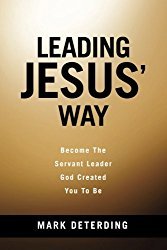 Leading Jesus’ Way is how you become the leader God created you to be. Read this book to learn an actionable model of servant leadership that will positively impact both your personal and professional life. Mark Deterding learned how to lead Jesus’ way from role models, from Scripture, and from personal experience. His career that took him from the shop floor to the executive suite with responsibility for thousands of people was a laboratory for him to test out this model and refine it. Mark knew what worked for him and he wants to help others learn to lead Jesus’ way. Leading Jesus’ Way will help you step into faith-based servant leadership, too. You can take your faith to work, get great results, and build up the people you work with using the lessons in this powerful book.
Leading Jesus’ Way is how you become the leader God created you to be. Read this book to learn an actionable model of servant leadership that will positively impact both your personal and professional life. Mark Deterding learned how to lead Jesus’ way from role models, from Scripture, and from personal experience. His career that took him from the shop floor to the executive suite with responsibility for thousands of people was a laboratory for him to test out this model and refine it. Mark knew what worked for him and he wants to help others learn to lead Jesus’ way. Leading Jesus’ Way will help you step into faith-based servant leadership, too. You can take your faith to work, get great results, and build up the people you work with using the lessons in this powerful book.
Find it on Amazon.
Click here to share a tweet.
Byron Ernest, The Hand in the Back of the Room
 The challenge to all of us in education is to find ways to make learning visible by connecting school work and real life for the students we serve. One of the ways to do that is to call on “the hand in the back of the room” and answer “why” with real world relevancy. Teachers many times fail to provide a context through observations, inferences, and actions appropriate for students to make the connection to the real world. These connections help the students to understand higher-level science concepts. The ultimate goal of education is to improve student achievement and performance, and the contents of this book reveal that teaching science in a relevant context could positively impact this achievement and performance.
The challenge to all of us in education is to find ways to make learning visible by connecting school work and real life for the students we serve. One of the ways to do that is to call on “the hand in the back of the room” and answer “why” with real world relevancy. Teachers many times fail to provide a context through observations, inferences, and actions appropriate for students to make the connection to the real world. These connections help the students to understand higher-level science concepts. The ultimate goal of education is to improve student achievement and performance, and the contents of this book reveal that teaching science in a relevant context could positively impact this achievement and performance.
Find it on Amazon.
Click here to share a tweet.
Sean Glaze, The Ten Commandments of Winning Teammates
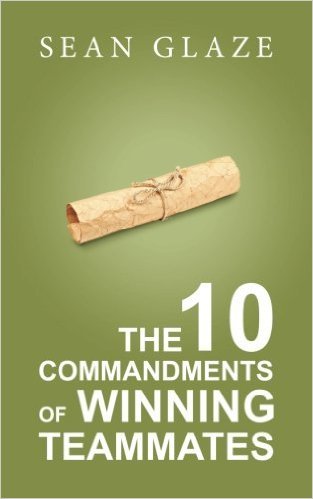 Winning Teammates are the people that make it possible for any group to succeed… the people who others depend on. In this book, you meet Nick Turner, a talented worker who finds himself changing jobs — again. While packing to move, he finds an old piece of paper tucked away in a shoe box… a forgotten gift from his high school coach with a list of ways to be a winning teammate. As he travels to his new job, he has a series of interesting interactions that illustrate the importance of the 10 Commandments his coach had emphasized years earlier. The ten lessons he benefits from during his journey will inspire you to be a winning teammate — regardless of the industry you work in.
Winning Teammates are the people that make it possible for any group to succeed… the people who others depend on. In this book, you meet Nick Turner, a talented worker who finds himself changing jobs — again. While packing to move, he finds an old piece of paper tucked away in a shoe box… a forgotten gift from his high school coach with a list of ways to be a winning teammate. As he travels to his new job, he has a series of interesting interactions that illustrate the importance of the 10 Commandments his coach had emphasized years earlier. The ten lessons he benefits from during his journey will inspire you to be a winning teammate — regardless of the industry you work in.
Find it on Amazon.
Click here to share a tweet.
Rebecca Henderson, Serving with Significance
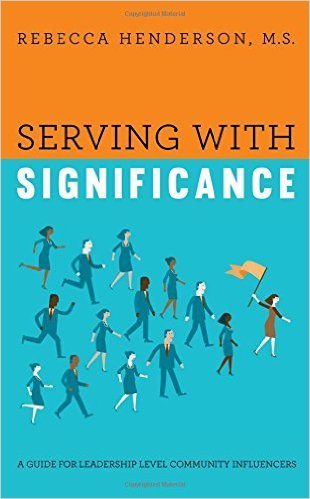 Many books on volunteerism and leadership are more theory than practice. Serving with Significance is full of easy-to-follow tips that can be implemented immediately by its readers. Although some people are lucky enough to be born leaders, leadership is a skill that can be learned. Like most skills, the more it is practiced, the better one gets. The concept of volunteerism at its very roots is changing the community and the world in which we live. Serving with Significance is designed for every type of group, from formal to informal, local to international, prayer group to professional group, social to humanitarian, and especially membership-based organizations. While the primary audience is that of the nonprofit sector, nearly all of the tips that follow are equally applicable in a corporate setting of any size. Leading the charge toward making a positive difference in the world is one of the few opportunities that every person can take advantage of at any point in his or her life.
Many books on volunteerism and leadership are more theory than practice. Serving with Significance is full of easy-to-follow tips that can be implemented immediately by its readers. Although some people are lucky enough to be born leaders, leadership is a skill that can be learned. Like most skills, the more it is practiced, the better one gets. The concept of volunteerism at its very roots is changing the community and the world in which we live. Serving with Significance is designed for every type of group, from formal to informal, local to international, prayer group to professional group, social to humanitarian, and especially membership-based organizations. While the primary audience is that of the nonprofit sector, nearly all of the tips that follow are equally applicable in a corporate setting of any size. Leading the charge toward making a positive difference in the world is one of the few opportunities that every person can take advantage of at any point in his or her life.
Find it on Amazon.
Click here to share a tweet.
Jim Lange, 65 Ways to Calm the Storm Within
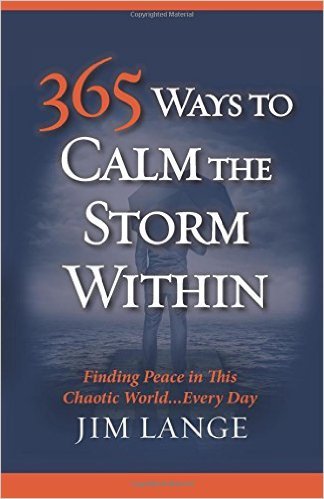 No matter what is going on around you, you can be at peace. It’s true. Because of the impact of that book and from listening to the requests of those in crisis, he now shares 365 bite-sized chunks which can make the truth of peace a reality in our lives. Learn how to: embrace the chaos and pain in your life; keep your peace from being stolen; follow a timeless cycle that Jesus taught over 2,000 years ago which is guaranteed to lead to greater peace in your life; plan appropriately to help eliminate anxiety; be joyful always which will lead to greater peace; enjoy spending time with God; focus on the right things which will lead to peace. Imagine yourself living each day with much greater peace… no matter what is happening around you. It is what God desires for you. And it can be done!
No matter what is going on around you, you can be at peace. It’s true. Because of the impact of that book and from listening to the requests of those in crisis, he now shares 365 bite-sized chunks which can make the truth of peace a reality in our lives. Learn how to: embrace the chaos and pain in your life; keep your peace from being stolen; follow a timeless cycle that Jesus taught over 2,000 years ago which is guaranteed to lead to greater peace in your life; plan appropriately to help eliminate anxiety; be joyful always which will lead to greater peace; enjoy spending time with God; focus on the right things which will lead to peace. Imagine yourself living each day with much greater peace… no matter what is happening around you. It is what God desires for you. And it can be done!
Find it on Amazon.
Click here to share a tweet.
Congrats to Mark, Byron, Sean, Rebecca, and Jim! We’re thrilled to support you!
Image credit: DariusZSankowski
November 29, 2016
Giving Tuesday: How To Live It Year Round
Today is Giving Tuesday, something that may be obvious from the stream of emails flooding your inbox soliciting donations. Giving Tuesday, explained on its website as “a global day of giving fueled by the power of social media and collaboration,” is considered by many to be the kick-off of the charitable season. Celebrated on the Tuesday following Thanksgiving in the U.S., and following Black Friday and Cyber Monday, it is a way for participants to focus on others after so much emphasis on material goods and consumption.
As much as I love Giving Tuesday, I often find myself overwhelmed. There are so many worthy causes, and by the Tuesday after Thanksgiving I am already straining to find resources to pay for the other extras that our family’s holiday celebration entails. As so many causes I love encourage me to give, and even proclaim that there are special matching fund opportunities on Giving Tuesday, I struggle to keep up fiscally and emotionally.
Perhaps I should walk a mile in the shoes of children in the Kratie province of Cambodia . . .
Last year, I was heavily invested emotionally in a Giving Tuesday effort. Giving Tuesday was presenting grants to applicants who submitted compelling stories. Semifinalists were chosen solely on the basis of “likes.” My #GivingStory was about Linda Freeman’s efforts to purchase enough pairs of The Shoe That Grows to give to the students at Light of Future Schools in Kratie Province, Cambodia. She needed approximately 600 pairs of shoes — a $9,000 cost — so a donation of $5,000 would have been HUGE.
Thanks to so many people who banded together to “like” the entry, it came close to making the semi-finals, but not close enough. I’ll be honest: I was really sad about this. I tend to believe, possibly naively, that if I just ask enough people, I can generate momentum for causes that I have chosen to espouse. I mean, how hard is it to click “like”?
However, other constituencies (animal causes, for example) had more “oomph” and, happily for them, went on to receive donations.
Meanwhile, children in Cambodia still needed The Shoes That Grow.
Why Giving Matters
I’ll tell you how it turned out for Linda’s team and the children in Cambodia, but first let’s take a look at the concept of giving in general. Why do people give?
Besides the obvious fact that the needs in this world are disproportionately distributed (many people have a surplus of food and income, while many others are starving and unable to make a living wage), giving pays other dividends.
Richard Marker, writing for eJewish Philanthropy in Why Do We Give? Does It Matter?, shared some of the reasons people give, including:
Underlying Altruism
Ego
Assuaging Guilt
Public Recognition
Prestige
Tax Benefits
Legacy
Prudent Use of Personal Assets
I inevitably get more out of giving than the recipient does (that’s how it feels at least). As an organization with generosity as a core value, we at Weaving Influence know that when we give more, we have more. And we don’t just mean money.
How to Model Giving Behaviors
Whether at work, home, or in our social groups, each one of us has the opportunity to model how to give generously.
I have seen outstanding models of giving year after year on Giving Tuesday. Last year, for example, ORGANIZE applied creativity, organization, and the knowledge that “it’s not just money that helps” to a campaign which registered thousands of Americans as organ donors. Giving Tuesday classifies their efforts as the biggest digital donor drive in U.S. history.
If you lead an organization, you can model giving behaviors by openly proclaiming that giving is a priority, both on Giving Tuesday and year round. People love to hear personal stories; confidentiality allowing, tell them the story of the family you helped, the free physical exams your money helped a rural clinic give, or the abandoned animals who now have homes because someone took the time to give money or resources.
If you are not currently a leader in an organization, don’t discount your impact. As Keith Richardson writes in this moving essay, My Brush With Death Showed Me the Power of Small Actions, no one is so insignificant that they are unable to make a difference. Keith writes, “I pay attention to the difference I can make with my gestures, my words. Small things can make an entire life feel worthwhile.”
If You Are Doing the Asking
I am not exaggerating one bit to say I have trouble asking people to give, even for causes I love dearly. It’s easy to ask in writing (anyone can hit “delete” and move on) but harder, so much harder, to do in person.
Every time I find myself searching in vain for the courage to ask for funds or resources for an organization I love, I remember my friend Mary Jane — a Multiple Myeloma Survivor who is also a top fundraiser for Team in Training– telling me, “I just ask everyone.” So simple. What does she have to lose? She has already stared down a life-threatening illness. How could a “no, I am not able to donate right now” ruin her outlook?
It helps to establish a relationship with someone before asking them to make a donation. The key here is that there is not a direct correlation between who you connect with and who agrees to give to your cause. Cast your relationship net wide and take a genuine interest in people, independent of their status as potential donors. It’s glaringly obvious if you befriend someone and then hit them up for a donation two weeks later.
About Those Shoes For Kids in Cambodia
As I mentioned above, my #GivingStory campaign did not generate a donation to buy shoes for the children in Cambodia.
However, I was not alone. Linda’s daughter-in-law, Daniella, requested donations to the project for her birthday.
Weaving Influence did a holiday campaign where for every mile run or walked by staff, a dollar was donated to the “shoes” effort.
A donor provided a matching grant of $3,000.
When Linda and her team visited Cambodia in August 2016, they provided 340 children with pairs of The Shoe that Grows. Because they were able to purchase 497 pairs of the 600-pair goal, all of the current enrollees at Light of Future schools got a pair of the shoes.
Looking back on the way events unfolded, I am reminded that while my efforts were a strong volley into the fundraising court, I was not playing that match all by myself. Linda was telling her networks. Daniella was sharing her birthday with the cause. Becky of Weaving Influence was encouraging us to run or walk and making sure every mile generated a donation.
This August, as pictures of the children wearing their new shoes scrolled onto my screen, I smiled, thrilled that the children were so happy. They benefited from so many people who cared about their health, physically and spiritually.

What didn’t matter one iota to them, though, was when the money was given. Hundreds of children in Kratie province now have shoes on their feet and the benefit of a medical checkup that was part of the shoe acquisition process.
All independent of a hashtag or a specific day.
Give what you can today, but remember there are 364 other days of the year when your donations of time and money can make a difference.
Image Credit: Child in Cambodia: Gabriel Rivera, Courtesy of Linda Freeman
Logo Credit: GivingTuesday.Org
November 22, 2016
5 Ways to Show Gratitude Online
This week, I have a lot to be grateful for, specifically because it marks three very important birthdays in my life. One year ago, on November 23rd, 2015, my daughter was born in Jerusalem, Israel. On November 24th, 33 years ago, my husband was born in Kingston, Jamaica. And on November 25th, 28 years ago, I was born in Indianapolis, Indiana.
And to top it all off, this week is Thanksgiving (and yes, I am still celebrating over here in Israel!). This week is pretty special, if I do say so myself.
With gratitude on my mind, I am making an extra effort to express thankfulness to those in my life this week, which got me thinking: Most of my work is done online and on the phone—what am I doing to express gratitude in these relationships?
This week, I’m working on implementing these five tips for showing gratitude and appreciation—will you join me?
Be responsive. Responsiveness is one of the best ways to show your client, colleague, or friend that you are truly grateful for their communication. You don’t need to be available to respond the minute an email or call comes in, but you should do your best to respond within 24-48 hours. Responding in a timely manner shows to others that the relationship is valuable to you, and that you appreciate and recognize their efforts to establish and maintain the connection.
Share resources and information generously. Do you have an e-book, list of best practices, or other online resource that others could benefit from? Can you make an introduction that could help someone in the professional life? Share the love! It may seem counterproductive to give away your knowledge or time, but by sharing generously with others, you are telling them that they are worth it to you.
Thank people even when they are just doing their job. A friend was recently telling me how she always makes an effort to thank her mailman. Even though he is doing his job and getting paid, your mailman is still providing a service that is essential to you! Are there individuals that you work with or interact with online that are providing you with a service? How about the person who coordinates that Facebook group that you love so much (approving/moderating posts takes a long time!), or the editor of your favorite online publication? Taking time to think these individuals shows that you appreciate the work that they do, even though it’s part of their job!
Rejoice in others’ wins. The internet is brimming with information, updates, exciting news, and everything else you could imagine, so sometimes it’s easy to skim over someone else’s win without much notice. By taking the time to acknowledge and rejoice in other’s wins, we show them that their contributions are important to us. For example, when you log into LinkedIn, job updates and other news pops up on your feed. Show these connections that you are happy and excited for them by taking a moment to congratulate them on their new jobs or promotions.
Remember: people you know online are also people offline! I admit it, I am guilty of sometimes relegating online relationships to the category of “virtual” and calling it a day. I recently heard a story about how one of our clients appreciated a blogger in our Team Buzz Builder network so much for her support on his book launch that he sent her two dozen roses! That act surely made her feel cherished and appreciated, but it also inspired the rest of us to reflect about how we can be more authentic in our relationships and show more gratitude to our online communities.
I would like to send an extra special thank you to the Weaving Influence family—team members, clients, Lead Change Group members, Team Buzz Builder, Hometown Reads, and everyone else that contributes to our vibrant network. My relationships with and connection to all of you enriches my life as a stay-at-home mom in a dusty corner of Jerusalem in an indescribable way!
Tell me—how are you working on showing gratitude to your virtual connections?
Image credit: Waldo93
November 18, 2016
Featured On Friday {Fanfare}: New Website for @Melissa_Lamson1
The Weaving Influence team values our partnership with global leadership expert Melissa Lamson, and is thrilled to showcase the new website our team has designed and developed for her at lamsonconsulting.com.
Melissa Lamson works with businesses of all sizes, including small and medium companies, large multi-nationals, Fortune 500s, government, non-profits, universities, and hospitals. Her ultimate mission is to help global organizations collaborate and prosper across a diverse workforce and customer base.
Melissa Lamson
Melissa Lamson, Founder and President of Lamson Consulting, is an author, consultant, and speaker who accelerates the business expansion goals of today’s most successful companies by developing global mindset, refining leadership skills, and bridging cross cultural communication. She has 20+ years of experience growing leaders, bridging cultures, and empowering teams.
As a sought-after speaker, facilitator and executive coach, she uses her unique global expertise to help companies and leaders take charge, expand their international business, and achieve real results. She has offered companies like Ikea, LinkedIn, MTV, Porsche, and SAP the leadership tools and insights to build successful management and project teams in every corner of the world. Melissa develops and teaches leadership skills, including time management, effective feedback, situational leadership, and coaching. She also has a proven track record in Diversity and currently facilitates a popular workshop for women on Networking & Advancement Strategies. Melissa has also authored five books on various aspects of international business culture, writes regularly for Inc.com, and shares more of her insights on her own Global Leadership blog.
Lamson Consulting
Melissa offers executive coaching, training, and facilitation solutions for workplace challenges such as: Management Skills, Leading Virtual Teams, Intercultural Training, Gender Cooperation, Work-Life Balance, and Developing Global Mindset. She also offers various Management Development workshops for both individuals and small groups.
Perhaps one of Melissa’s greatest passions is her focus on #WomenAdvance. Many companies today reap the benefits of a diverse workforce, but there are a few challenges to creating more equality in the boardroom. Melissa has pioneered the way with a series of ground-breaking programs for women and men on how to cooperate and communicate more effectively in the workplace. She has several unique resources, a free video series, and multiple workshops that seek to break down barriers and promote more gender equity.
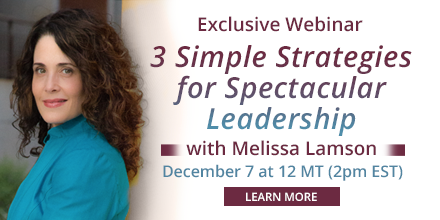 Strategies for Spectacular Leadership
Strategies for Spectacular LeadershipWhether you’re new to management or a veteran leader, it can be difficult to lead others. We need the right balance between authority vs. autonomy, consensus vs. direct decision-making, and friendly vs. firm. Join the exclusive free webinar with Melissa on December 7 at 2pm EST to learn more about her simple formula for spectacular leadership. Register here.
Check out Melissa’s new site to learn more:
Women Advancement — this page includes free downloadable resources and information about Melissa’s unique approach to gender in the workplace!
Management Workshops
Leadership Books
Global Leadership Blog
Connect with Melissa on Facebook, Twitter, LinkedIn, or YouTube. Additionally, you can send her an email at melissa@lamsonconsulting.com.
Interested in our book design or web design/development services? Contact us to learn more!
November 17, 2016
Why Action is What Changes Things
This post is part of our 2016 Team Buzz Builder Guest Blogger series. Today we are pleased to introduce you to Chris Jordan, a John Maxwell certified coach and blogger at CNE Ministry.
I would like to touch on a topic that seems to be coming up more and more in every facet of my life recently.
It’s a topic that there is quite a bit a “talk” about, that garners many people’s attention in attracting them to conferences, to churches, or to meetings surrounding this topic. There is quite a bit of intention in this topic as well. But if you know the saying… even the best intentions lead down a road of destruction. But why?
Well, let me share the topic of this post: Action.
Action is something we hear talked about everywhere we go. Action is something that can be good, bad or completely ignored. I believe a lot of leaders would agree with a statement like this: “Without vision, the people will perish.” It probably has been used in some form of what I just said throughout history. It’s a true statement. A powerful statement. But unless you are willing to put action behind that vision, how will that vision happen?
People wish, hope and pray for dreams to come true, for a vision of what they would want their life to be to materialize. People want to wake up one day in paradise with all the freedoms of life, to basically wake up in a life of significance.
John Maxwell nails this in his book Intentional Living when he says, “No people have ever thought themselves into significance. They acted themselves into it.” The italics are my emphasis. It is the point to this post. There’s absolutely nothing wrong with having thoughts, hopes, desires, dreams, goals… visions. But you will never just happen to achieve them! It takes intentional action on your part.
Our team has a saying we share quite a bit: “Are you making foot prints, or are you making butt prints?” This is exactly what I am talking about. Action is what changes things. Vision is what gives us direction, and I believe vision is vital. Just as a vision without action won’t be fulfilled, action without a vision is blind movement. Like a hamster on a wheel. There is a lot of action, but no movement.
While this is a topic that can clearly go much deeper, this post is just focused on the action part, assuming you have a vision, a dream, or a goal already in mind. Now is the time to put it into action.
What dream or goal have you been pondering? What can you do today to intentionally move toward it? What is distracting you? What are you allowing to influence your time and allocation of resources?
If you truly want to reach your goals, then you must commit to intentional acts in that direction every day. Are you ready to act?
 Chris Jordan is married to Emily and they have two children. He is a USAF and Law Enforcement Veteran and holds a Master’s Degree in Leadership and Business Management from Johns Hopkins University. He also has obtained a graduate level Christian Ministry Certificate from Liberty University, and is very proud to be a certified John Maxwell leadership coach, speaker, and trainer.
Incorporating these few achievements, and also his many failures, has opened up an opportunity for Chris and Emily to lead a team that trains, equips, and mobilizes people to take intentional action in fulfilling their purpose, dreams or goals. They love people and finding ways of serving them however they can.
Chris Jordan is married to Emily and they have two children. He is a USAF and Law Enforcement Veteran and holds a Master’s Degree in Leadership and Business Management from Johns Hopkins University. He also has obtained a graduate level Christian Ministry Certificate from Liberty University, and is very proud to be a certified John Maxwell leadership coach, speaker, and trainer.
Incorporating these few achievements, and also his many failures, has opened up an opportunity for Chris and Emily to lead a team that trains, equips, and mobilizes people to take intentional action in fulfilling their purpose, dreams or goals. They love people and finding ways of serving them however they can.
Image credit: geralt
November 15, 2016
The Pitching Game: How PR Is Like Dating
Zoosk. Tinder. Match.
The internet has changed the world of dating as much as it has changed the world of media.
That said, when it comes to finding a media match—the process isn’t much different than what it was like three decades ago—research and relationship building are still key to finding the right mate.
Much of public relations work is behind the scenes. PR requires a lot of time, skill, luck, and effort to land coverage—and sometimes this all goes unseen.
In an effort to draw back the curtain of what it is we PR professionals do, I’d like to share some tidbits about our pitching game.
Finding your match.
Blind dates aren’t ever successful when it comes to trying to find the right media match. PR professionals must do their homework. So we search for outlets that are a good match for our client’s content and drill down further to find the right contact within that outlet. If a pitch isn’t relevant to what a journalist covers, it won’t get a second glance—and it may even burn a bridge.
We find matches through traditional keyword searches in Google, on media sites, and using our Cision database. We then read the journalist’s most recent work to get an idea of what they cover and the themes in their articles. Next, we look for ways our stories can supplement or expand on their subject matter. We also include why our stories are of interest or use to their audiences. (Thankfully, Weaving Influence has built many relationships over the years, so we’re already familiar with what might interest hundreds of reporters and editors and don’t have to start from scratch.)
Nailing the first impression.
Like with dating, both parties want to get something out of the relationship. Journalists don’t have any interest in giving free advertising. They want a good story. And they want to know it’s a good story right away. So, just like in a first date, a media pitch must put its best face forward.
So, we write pitches that are focused (getting through the 5 W’s immediately) and unique—showing what makes our client special and worth taking a second look at. We craft angles specific to the journalist’s interest where only our clients are experts, where our claims are often supported by stats and facts, and aim to tie content into popular themes and high-profile news events. At the heart of everything we write is the answer to “why you should care.”
Following up.
Just like after a first date, there’s a fine line to walk to show that you’re serious without being annoying. It pays to be persistent—but to a point. We typically like to do a personal, friendly follow-up once or twice after the initial pitch. After all, there are times when journalists missed the pitch. By the second follow-up, if there is no response, that’s typically because they aren’t interested. Phone calls and excessive follows-up don’t remind journalists of a pitch—they remind them to avoid that person at all costs.
If a reporter is nice enough to tell us they aren’t interested, we usually like to ask what they are working on or might be looking for so we may be able to help them in the future.
Establishing the relationship.
After we’ve landed a media opportunity for our clients, we’re sure to follow back up with the contact, letting them know that we appreciated the story and will share through our channels—which we do! We also keep track of these relationships in spreadsheets for use in future pitching.
It would be fantastic if there was a Match-like service for media pitching and personnel. Until then, we search for our media mates the old-fashioned way.
Image Credit: karenr / 123RF Stock Photo
November 11, 2016
Featured On Friday: Our Veterans, Our Leaders
Though I have been living abroad in Israel for over three years, I am reminded on an almost daily basis of my American roots and identity. I remember backpacking around southern Israel at eighteen years old and coming across a group of US soldiers in a local bar in a small, dusty town. I was shocked! What are you doing here? I asked. The soldiers told me that they were stationed at a local base, training and working with the Israeli army. I had never before really considered the reality of the US military presence abroad, and felt so proud and so comforted by the fact that I could meet a US soldier in such an unlikely place.
It is particularly fitting for us to be reminded of the sacrifices and bravery of our veterans, our country’s great leaders, as thoughts and questions about the election and the future of the United States as well as its relationship to foreign entities continue to surface. Additionally, in this time where our nation needs united leadership, we can learn from our veterans and active service men and women, a group that produces some of the most experienced and noble leaders we have.
Servant Leaders
“The supreme quality for leadership is unquestionably integrity. Without it, no real success is possible, no matter whether it is on a section gang, a football field, in an army, or in an office.” ~General Dwight D. Eisenhower
A good military leader is the epitome of the servant leader, always putting the needs of others before him or herself, constantly striving to help individuals reach their potential. Though many CEOs and business professionals strive to live as servant leaders, our military puts these principals into action on a daily basis—through caring for troops domestically or abroad, training others to take over positions of leadership, and courageously risking their own wellbeing for the greater good of the American people and nation.
Our veterans are our greatest leaders. This year, let’s strive to give them the respect and honor they deserve, and also to empower them to share their leadership with the country long after their service is over.
Selfless Leaders
“Never let your ego get so close to your position, so that when your position goes, your ego goes with it.” ~General Colin Powell
General Colin Powell warns that leaders should never identify too much with their position, but rather with who they are what qualities they imbue. Each and every veteran has been faced with the reality of leaving the military and entering the civilian world, a place where their unique contributions and position often go unrecognized. Our veterans knew that the military would continue without them once they completed their service, yet still dedicated themselves 100% to their roles. This attitude of committing oneself to a greater good purely to help make a difference takes tremendous humility, and is an attitude that every leader should strive to adopt.
Participant Leaders
“It doesn’t take a hero to order men into battle. It takes a hero to be one of those men who goes into battle.” ~ General H. Norman Schwarzkopf
A great leader not only gives orders, they join in and participate in the struggle and triumphs of their team. The military is the ultimate embodiment of this leadership principle—leaders and those being led work together, in the trenches, towards accomplishing greater goals and growth. Their hard work and dedication ripples out to benefit our entire nation.
The entire Weaving Influence team would like to extend a sincere THANK YOU to all of our veterans as well as our active-duty servicemen and servicewomen. In a world of instability and uncertainty, we appreciate everything that you do and strive to learn from your leadership.
What are you doing to honor veterans in your community and across the country? We’d love to hear!














